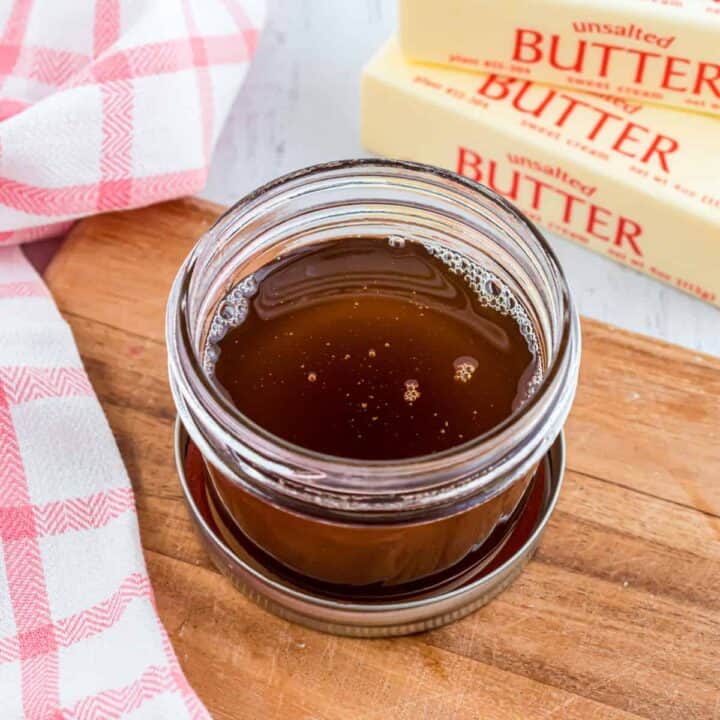
Yield: ½ cup
How to Brown Butter
Prep Time
2 minutes
Cook Time
10 minutes
Total Time
10 minutes
Everyone should know how to brown butter. This easy guide takes you through the process of warming butter on the stove to bring out a fragrant, nutty taste that enhances the flavor of any dish!
Ingredients
- ½ cup butter
Instructions
- In a small saucepan or skillet, add butter and melt over low heat.
- Once the butter has melted, increase the heat to medium. Continue heating for about five minutes, stirring constantly with a rubber spatula. The butter will start to foam at this point.
- With the rubber spatula, move the foam aside to monitor the brown flecks on the bottom of the pan. The butter will begin to smell nutty and develop into a golden-brown color.
- Continue to heat until desired level of browning is achieved. At this stage, close monitoring of the butter is very important. The butter can go quickly from browned to burnt, depending on the heat level.
- When done browning, immediately pour the browned butter into a heatproof bowl to cool. Do not cool in the pan as it will continue to brown.
Notes
- Browned butter can be stored, in an airtight container or jar, at room temperature for 5 days or in the refrigerator for up to 2 weeks.
- Salted or unsalted butter can be used, depending upon the recipe. Adjust the measurement of butter you need for the recipe. I don't recommend browning over 1 cup of butter at a time, as it's hard to get an even browning unless you have a large pan.
- Working with a pan with a light colored bottom is helpful because you can’t see the browning of the milk solids if you use a dark colored pan, and it is easy to burn the butter.
- A rubber spatula is a good tool to use for this because it helps keep the butter moving, allows the solids to be swirled off the bottom, aiding in the butter browning evenly.
- Stirring the butter frequently throughout the process helps to release the bubbles and reduce the amount of splatter.
- During the process, lifting some of the brown bits up with a spoon or even spooning a small amount onto a plate can help check the level of browning.
- Leaving the butter in the saucepan or skillet after browning can result in over browning, or even burning, from the residual heat.
- The goal is to brown the milk solids somewhere between a light golden brown and a dark brown. If the solids are black, the butter is burnt.
- Measure the amount of butter needed for the recipe, after browning the butter. There is a slight evaporation of liquid during the cooking process. I usually add an extra Tablespoon of butter to be browned. For instance, if the recipe calls for ½ cup of browned butter, melted...I will melt 9 Tablespoons then measure out ½ cup after melting.
Nutrition Information:
Yield:
8Serving Size:
1 TablespoonAmount Per Serving: Calories: 102Total Fat: 12gSaturated Fat: 7gTrans Fat: 0gUnsaturated Fat: 3gCholesterol: 31mgSodium: 91mgCarbohydrates: 0gFiber: 0gSugar: 0gProtein: 0g
*Nutrition facts are an estimate and not guaranteed to be accurate. Please see a registered dietitian for special diet advice.
